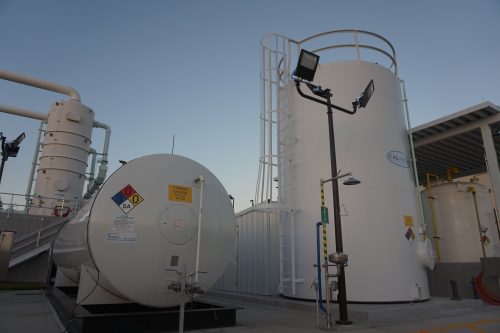Image courtesy of Florida Water Daily/Flickr.
Amidst today’s climate crisis and turmoil, there have been many pushes for sustainable practices and renewable energy. Industrial development has led to increased transformation of freshwater into industrial wastewaters, calling for more sustainable practices, as well as better water purification methods. While researchers hunt for ways to halt damage to the environment, Menachem Elimelech, Professor of Chemical and Environmental Engineering at Yale University, is taking it a step further with his research team. They are hoping to reverse the environmental impact of high salinity brines through “reverse osmosis.”
Reverse osmosis is a way to purify water by removing dissolved ions, solid materials, and other contaminants. It involves using a permeable membrane that allows water to seep through while keeping out the impurities. Through this process, scientists are gradually restoring freshwater, an essential component of several ecosystems. Most importantly, the mechanism can attenuate water scarcity in different places by filtering contaminated natural water, providing clean water to drink, to irrigate crops, and for other utilities. However, current reverse osmosis technology has its limitations. There is a maximum hydraulic pressure (pressure that the water exerts on the membranes) that current membranes can withstand. Elimelech’s research tackled the problem of designing a mechanism to bypass this system.
The overall goal of this study was to design a mechanism that could lead to minimal liquid discharge. Current disposal methods have strict regulations and, with the high hydraulic pressure required to meet those standards, the task becomes very difficult. Nevertheless, the study’s findings point to an alternative.
The team implemented low-salt-rejection-membranes (LSRMs) to purify streams with high salt concentration so that a moderate hydraulic pressure would be sufficient. Specifically, LSRMs only remove some of the salt in the water, such that a minimal hydraulic pressure is sufficient; other filtration methods remove the rest of the salt. Deshmukh was surprised to see that LSRMs, which are more susceptible to salinities than other membranes, are far more efficient than current technologies, such as mechanical vapor compressors. Moreover, LSRMs can be readily used, unlike current reverse osmosis technologies, as LSRMs reduce the pre-treatment required to treat the brine that arises from high saline water.
This research also addresses problems with brine disposal. Current methods of disposal, such as deep-well injection, are expensive and can create environmental consequences. Deshmukh noted that the LSRMs provide energy-efficient means for desalinating or concentrating high salinity brines without requiring unrealistically high hydraulic pressures. “By consuming less energy per unit mass or volume of pure water produced the process will lower the energetic footprint of high salinity brine treatment,” Deshmukh said.
Freshwater resources are becoming depleted, and bodies of water are becoming scarce all around the world. In light of this environmental predicament, there is a growing necessity for an efficient system such as “reverse osmosis,” which can comply with current restrictions of close-to-zero minimal liquid discharge, while also replenishing freshwater resources––one drop at a time.
Citations:
Wang, Z., Deshmukh, A., Du, Y., & Elimelech, M. (2020). Minimal and zero liquid discharge with reverse osmosis using low-salt-rejection membranes. Water Research, 170, 115317. doi: 10.1016/j.watres.2019.115317

